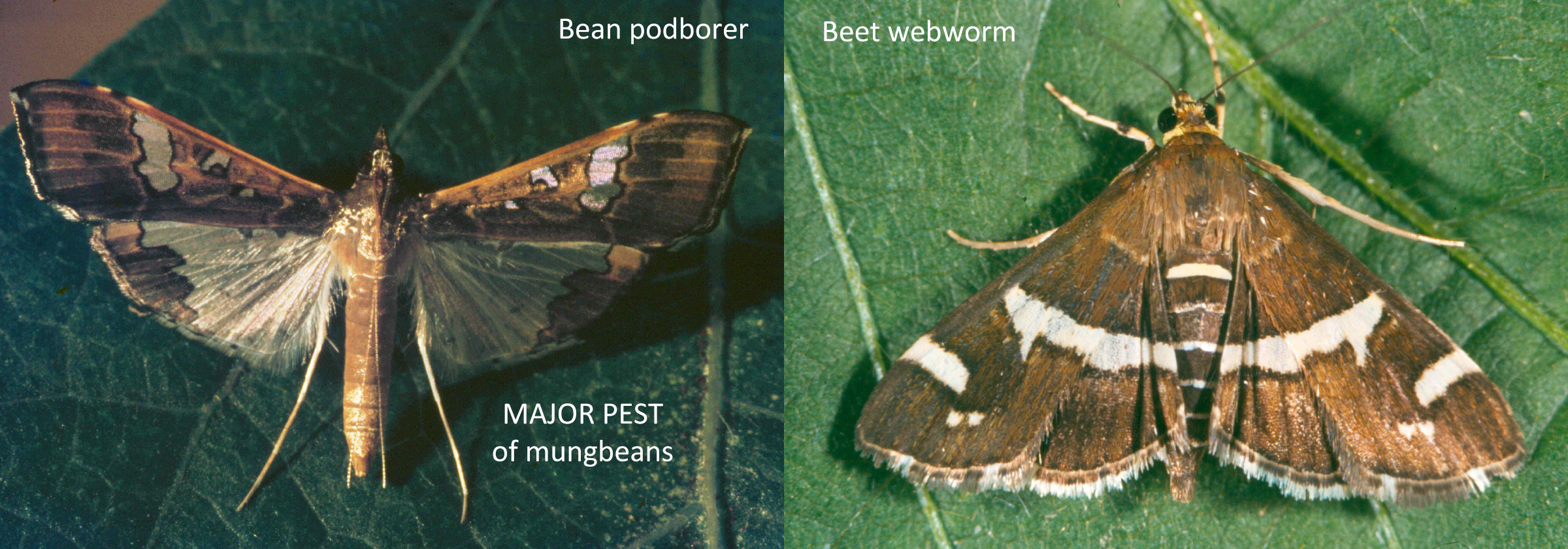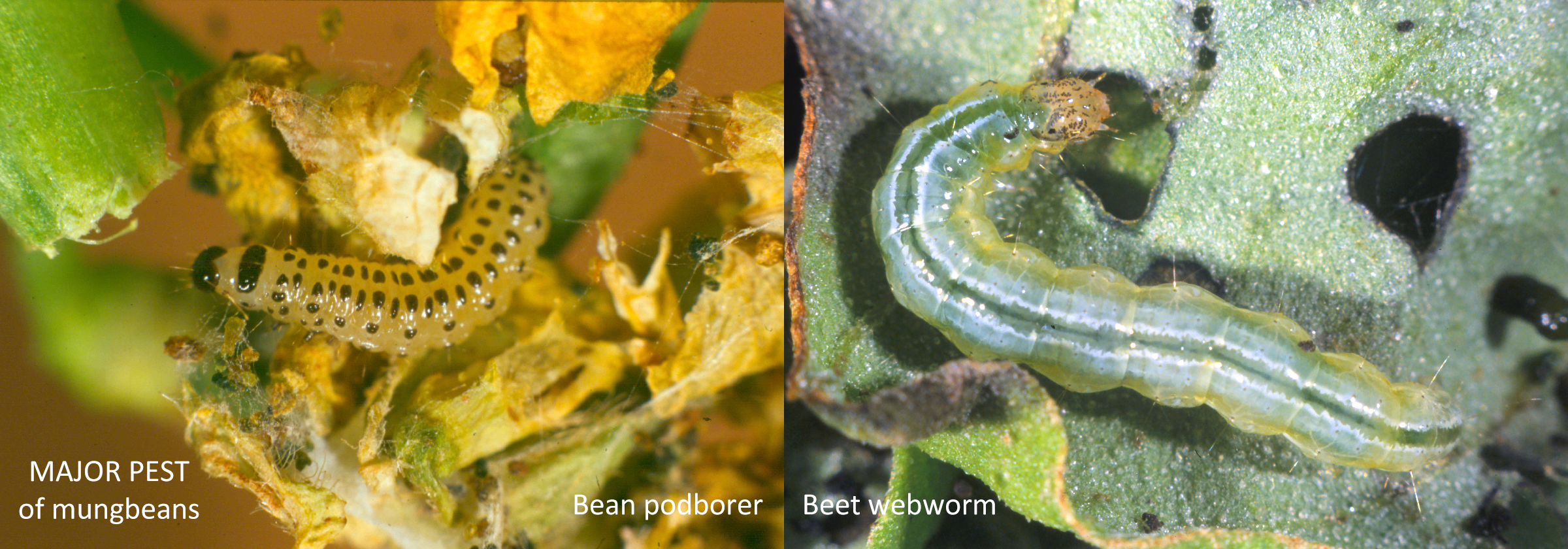Observations from recent Pulse Check field days in CQ
Bean podborer (Maruca vitrata) and beet webworm (Spoladea recurvalis) are on the move in Central Queensland (CQ) mungbean crops. While both species may also be active in other mungbean regions, bean podborer is most likely to occur in coastal (e.g. the Burdekin) and subcoastal (Biloela, Kingaroy) regions.
Bean podborer is a major mungbean pest that attacks flowers and pods, while beet webworm is a leaf feeder that is breeding up in large numbers on its favourite host, the black pigweed (in CQ it is frequently referred to as the black pigweed moth). Beet webworm moths are often mistaken for bean podborer moths, but the latter are easily distinguished by their outstretched wing pose, whereas the webworms rest with their wings folded pack at a 45-degree angle. The webworms also have predominantly brown hindwings with a narrow white band, whereas podborer moths have predominantly white hindwings with a narrow brown band at their outer edge.

Bean podborer and beet webworm moths may look similar, but their resting pose and hindwing colour is different (Photos by Joe Wessels).
In some crops, swarms of beet webworm moths were readily obvious, but were not a threat to the crops in question, as their larvae were feeding on the prolific pigweed. However, beet webworm in plague numbers may cause economic damage, particularly in crops at the critical podfill stage, during which >20% defoliation can reduce yields.
Although bean podborer moths were not evident, closer inspection of buds and flowers in some crops revealed numerous small podborer larvae feeding within these structures. Some flowers had small amounts of fine, difficult to see webbing, but others had no external signs of the podborers within.

Bean podborer and beet webworm larvae look very different (Photos by Joe Wessels).
Call to action
Growers and consultants in all coastal and subcoastal regions are urged to check their crop for podborers. If sampling larvae with a beat sheet, be aware that only about 20% of larvae inside flowers may be dislodged. Multiply the number of larvae found on the beat sheet by five to estimate actual larval numbers, and adjust for row spacing to calculate larvae per square metre.
For more accurate sampling, examine at least 20 random flowering racemes and tease them open to find any larvae inside. Multiply the number of racemes per plant by the plants per square metre by the average number of larvae found per raceme to determine the number of larvae per square metre.
Take action if you find more than 5 larvae/m2 in the flowers
Larvae can be easily controlled with Altacor® at 70 g/ha, provided spray water volumes are at least the minimum listed on the label (30 and 100L/ha for aerial and ground rig applications respectively) and that nozzles producing medium droplets are used. Do not use nozzles producing coarse droplets, such as air-induction nozzles.
Altacor® can give as long as three weeks’ protection and kills larvae inside the flowers but growth dilution (the setting of new buds and flowers) may reduce the efficacy of early-budding applications over time. Larvae may take three or more days to die, but stop feeding during this period.
The other product that can be used under permit (PER 87597) against podborers is emamectin benzoate (Affirm®) at 250 mL/ha. Add a non-ionic surfactant to Affirm® and do not apply to crops under visible stress. Affirm® is also an ingestion insecticide, and the same minimum spray volume and spray nozzle comments apply as for Altacor®. Affirm®-sprayed larvae also do not die straight away, but become moribund and stop feeding. These moribund symptoms are more subtle than with Altacor®—if in doubt, collect larvae and place in a jar with sprayed flowers. If there is no significant feeding, the insecticide has done its job.
Note that
- Altacor® is restricted to 1 spray per crop, while Affirm® allows 2 sprays per crop.
- While no insecticides are registered against beet webworm, any insecticides targeting bean podborer and helicoverpa are likely to provide incidental control.
- Synthetic pyrethroids (which are not registered for this purpose) are ineffective on bean podborer.
Please report any significant outbreaks to Hugh Brier at DAF Kingaroy on 0428 188 069 or email [email protected]
For more information and pictures of beet webworm, see our recent article on beet webworm flights.
